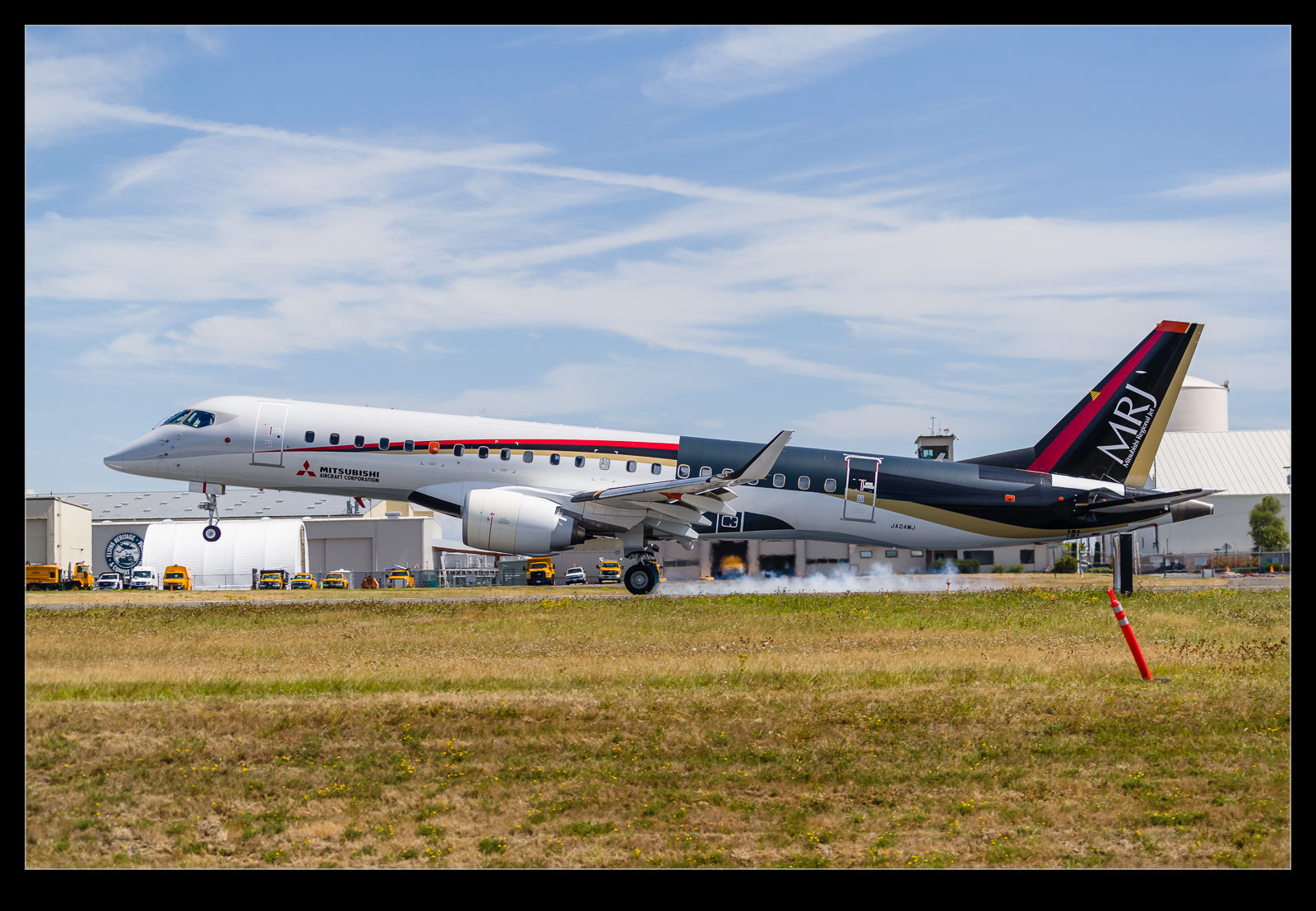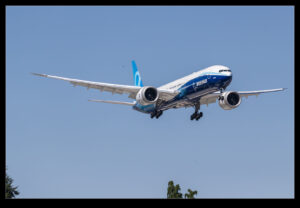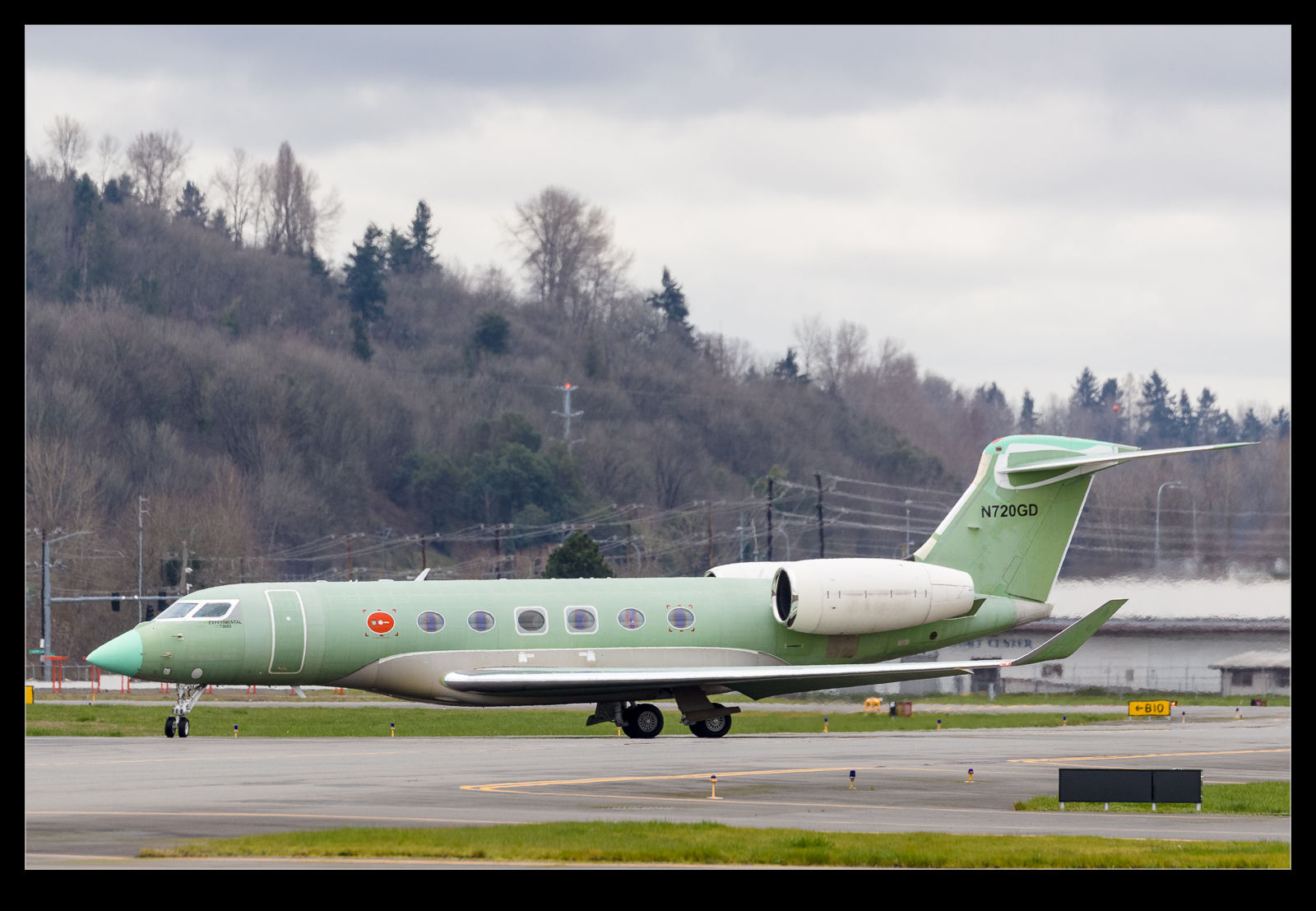 A lunchtime jaunt up to Everett was the result of ATS carrying out a test flight of a Janet 737. I got to the field with a little time in hand and was looking on FlightRadar24 for the position of the inbound jet when I saw something orbiting north of me up near Concrete. It turned out to be one of the Mitsubishi MRJ90 test aircraft. It was flying a series of patterns up there. Since they carry out the test flying from Moses Lake, I wasn’t so surprised. More importantly, I figured that they would head back to base when they were done.
A lunchtime jaunt up to Everett was the result of ATS carrying out a test flight of a Janet 737. I got to the field with a little time in hand and was looking on FlightRadar24 for the position of the inbound jet when I saw something orbiting north of me up near Concrete. It turned out to be one of the Mitsubishi MRJ90 test aircraft. It was flying a series of patterns up there. Since they carry out the test flying from Moses Lake, I wasn’t so surprised. More importantly, I figured that they would head back to base when they were done.
 Imagine my surprise when the radio burst to life with their callsign setting up on the approach. A Janet was worth the trip but the MRJ was truly a bonus. I have only seen one before and that was a delivery flight from Japan to Moses Lake that staged through San Jose and was in the blog here. I hoped it was a different jet, but wasn’t going to gripe if it wasn’t (and I was pretty sure it wasn’t based on recollection of the registration).
Imagine my surprise when the radio burst to life with their callsign setting up on the approach. A Janet was worth the trip but the MRJ was truly a bonus. I have only seen one before and that was a delivery flight from Japan to Moses Lake that staged through San Jose and was in the blog here. I hoped it was a different jet, but wasn’t going to gripe if it wasn’t (and I was pretty sure it wasn’t based on recollection of the registration).
 The jet hummed its way down the approach and landed in front of me (and a few others that either knew or had got similarly lucky). It them taxied back and held in front of FHCAM. There was a departing Embraer in front of it so I figured it was waiting for them. However, they departed and it didn’t move for a while. I needed to head back so was desperately hoping it would go soon. Just as I was about to give up, they released the brakes and taxied to the hold. The departure was pretty quiet with the Pratt GTFs not making much noise at all.
The jet hummed its way down the approach and landed in front of me (and a few others that either knew or had got similarly lucky). It them taxied back and held in front of FHCAM. There was a departing Embraer in front of it so I figured it was waiting for them. However, they departed and it didn’t move for a while. I needed to head back so was desperately hoping it would go soon. Just as I was about to give up, they released the brakes and taxied to the hold. The departure was pretty quiet with the Pratt GTFs not making much noise at all.
 The original colors of the jet appear to have been overtaken by test markings. There were some details around the engine inlets and the upper rear fuselage had been painted black. I suspected this might be for testing of water ingestion to help visualize the water flow but if anyone knows better what the purpose is, please do let me know.
The original colors of the jet appear to have been overtaken by test markings. There were some details around the engine inlets and the upper rear fuselage had been painted black. I suspected this might be for testing of water ingestion to help visualize the water flow but if anyone knows better what the purpose is, please do let me know.

 I was up at Arlington airport to see some vintage planes one weekend and was a short distance away from the hangars that Eviation operates from. This is where they built their Alice prototype. A composite airframe, the Alice was molded on site by the look of things. All I read suggests any production aircraft will be significantly different from the prototype so the molds are probably surplus at this point.
I was up at Arlington airport to see some vintage planes one weekend and was a short distance away from the hangars that Eviation operates from. This is where they built their Alice prototype. A composite airframe, the Alice was molded on site by the look of things. All I read suggests any production aircraft will be significantly different from the prototype so the molds are probably surplus at this point. Whether that is the case or not, at least some of them appear to now be stored outside. I took a few images of them because the shaping is quite interesting and the construction of the molds themselves is something I like to see. Tooling for an airframe is not as elegant as the airframe it will produce and it needs to be rigid to allow it to produce what is needed. Now it is no longer needed, I wonder what its future will be.
Whether that is the case or not, at least some of them appear to now be stored outside. I took a few images of them because the shaping is quite interesting and the construction of the molds themselves is something I like to see. Tooling for an airframe is not as elegant as the airframe it will produce and it needs to be rigid to allow it to produce what is needed. Now it is no longer needed, I wonder what its future will be.























